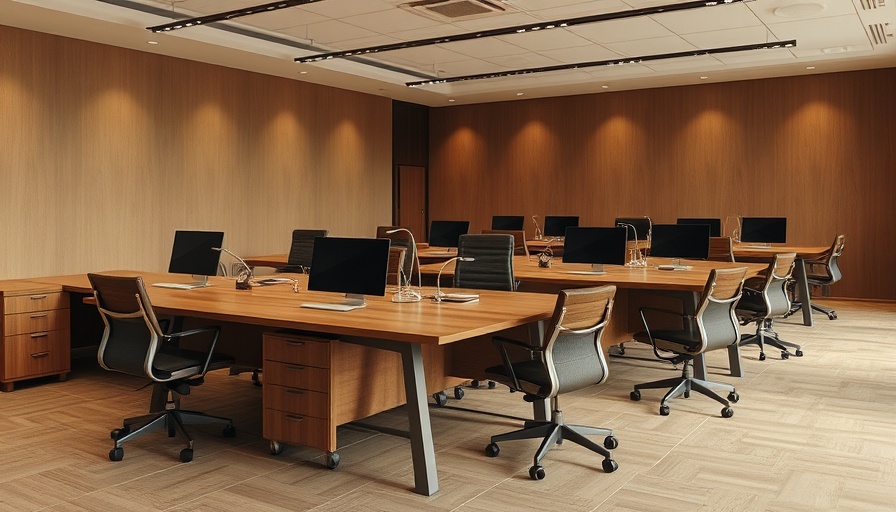
Modernizing the Concept of Co-Working with Foolscap
Foolscap’s new co-working space in Cremorne aims to revolutionize the traditional office environment by reimagining the Roman forum as a collaborative workspace. This innovative design not only emphasizes aesthetics but also prioritizes comfort and functionality, catering to the needs of today’s remote workers. Digital nomads and freelancers often seek environments that foster creativity while also being ergonomically sound, something Foolscap excels at.
Why Environment Matters for Productivity
The importance of a well-designed workspace cannot be understated. Studies have shown that the right environment can significantly enhance productivity, especially for those working remotely. An ergonomic workspace can reduce discomfort, allowing individuals to work for longer periods without strain. At Foolscap, careful attention has been paid to seating arrangements, lighting, and acoustics to create a balanced workspace that empowers individuals to thrive.
Ergonomic Principles in Design
For remote workers, understanding ergonomics is crucial. Foolscap incorporates ergonomic chairs and desks that can be adjusted to fit the user’s height and work style, minimizing the risks associated with poor posture. This means that whether you are lounging with a laptop on a sofa or seated at a desk, your comfort is prioritized. Furthermore, integrating elements such as standing desks can allow workers to alternate between sitting and standing, boosting both physical health and mental alertness.
The Impact of Community
A unique aspect of co-working spaces like Foolscap is the sense of community they foster. As opposed to isolated home offices, these environments encourage social interactions that can lead to partnerships and collaborations, essential for those who thrive on networking. By designing spaces that invite casual interactions, Foolscap provides not just a desk, but a hub for innovation and engagement among digital nomads.
Innovative Features of Foolscap’s Design
Foolscap includes several innovative features aimed at enhancing the workspace experience. These include collaborative areas equipped with whiteboards for brainstorming sessions, soundproof booths for private calls, and relaxation zones to take well-deserved breaks. Additionally, the decor incorporates elements reminiscent of the Roman forum, fostering creativity while paying homage to classical design.
Inspiration Behind the Design
Drawing inspiration from the Roman forum, which was a center of public life in ancient Rome, emphasizes community engagement and shared experiences in today’s work culture. Foolscap’s design is not just about aesthetics but about creating an environment that reflects the collaborative nature of modern work. Just as the forum was a space for discussion, the co-working area invites conversation and connection among its users.
Practical Tips for Maximizing Your Workspace
When transitioning to a remote workspace, consider the following tips to enhance your home office experience:
- Invest in adjustable furniture that meets your ergonomic needs.
- Create distinct zones for work and relaxation to maintain productivity.
- Utilize lighting strategically to reduce eye strain and enhance mood.
- Incorporate greenery to improve air quality and create a calming atmosphere.
Conclusion: Embracing the Future of Workspaces
Foolscap’s approach to co-working is a blueprint for the future of workspace design, combining elements of classic architecture with modern ergonomic principles. For digital nomads looking for comfort and efficiency in their remote work environments, spaces like Foolscap offer more than just a desk; they provide a community and a place where productivity flourishes. If you’re exploring options for a co-working space, consider embracing these ergonomic principles to create a more comfortable and efficient workspace for yourself.
 Add Row
Add Row  Add
Add 




Write A Comment